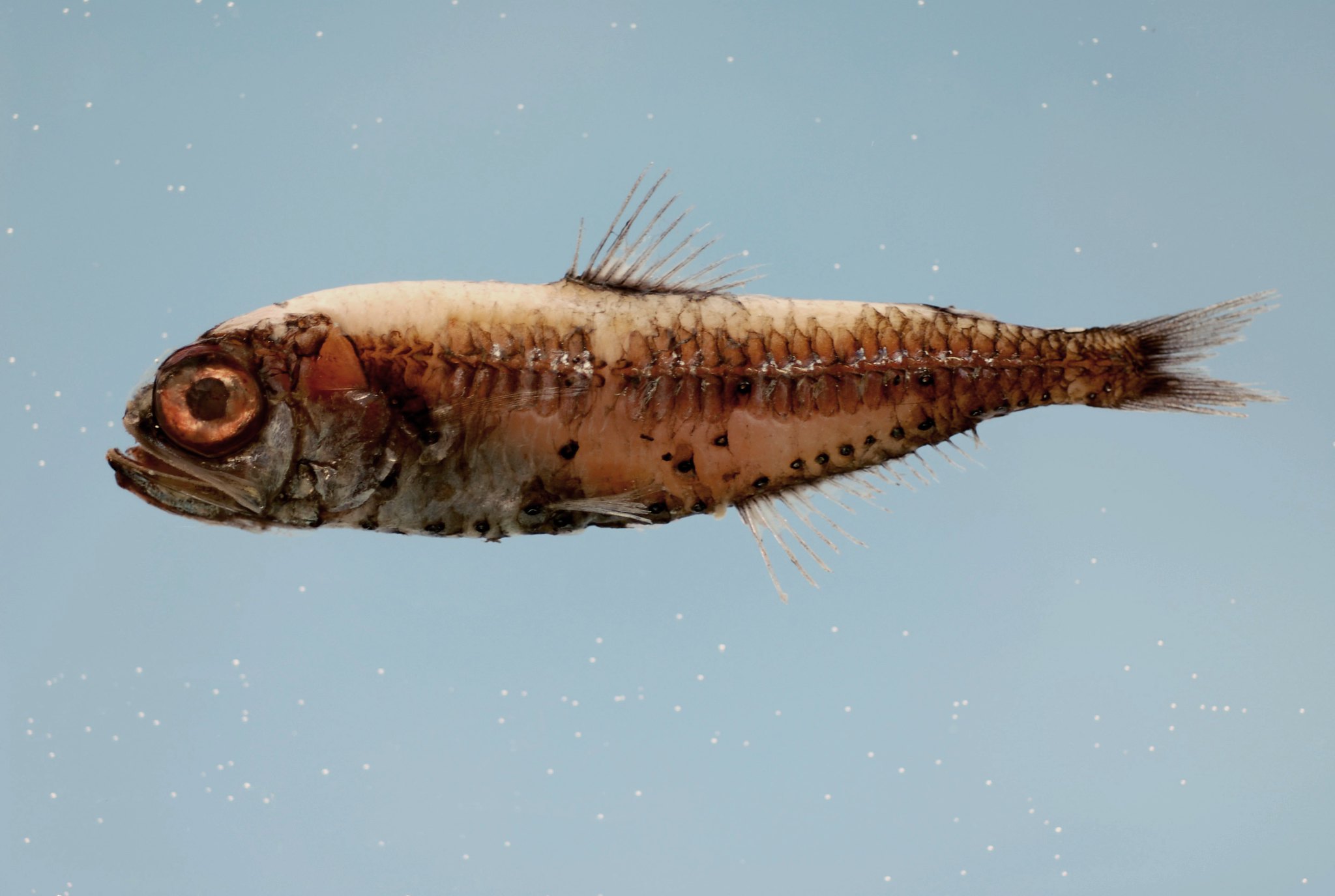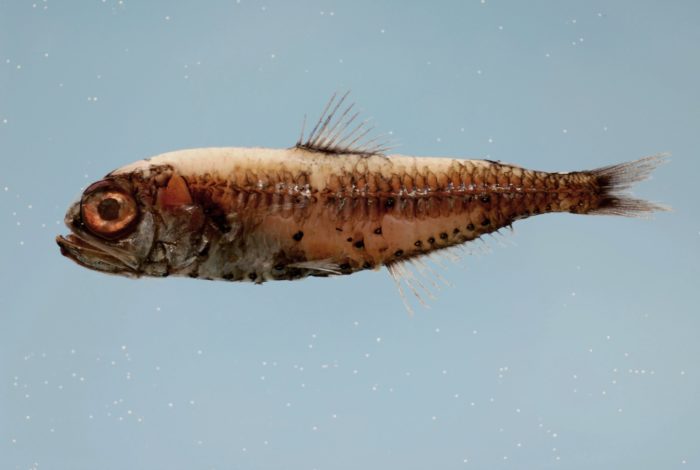
Sea Wonder: Lanternfish

Photo credit: SEFSC Pascagoula Laboratory; Collection of Brandi Noble, NOAA/NMFS/SEFSC.
Not to be confused with the anglerfish, a deep-sea fish with a bioluminescent lure attached to its head used to hunt prey in the dark, discover the wonder of lanternfish with this week’s Sea Wonder!
Appearance
Lanternfish have slender bodies about four inches long, a distinctly rounded head, and eyes that are large in proportion to the size of their bodies. Depending on where a particular population lives, their color can range from iridescent blue to silver to dark brown.
What makes lanternfish so unique are the groupings of photophores (organs that produce light) on the underside of their head, body, and tails. This allows lanternfish, which adjust the brightness of these organs to match ambient light at the surface, to camouflage themselves. Unique populations of lanternfish in the ocean may have photophore groupings that differ from other populations, and in some cases specific grouping patterns are exclusive to males and females.
Habitat
Lanternfish are one of the most common species of fish in the open ocean, and can be found in or near almost all of America’s national marine sanctuaries, with the exception of Thunder Bay National Marine Sanctuary and Mallows Bay-Potomac National Marine Sanctuary. They live all over the world in habitats ranging from 33 feet to nearly a mile deep, though most species remain near the coastlines.
Populations’ migratory patterns vary, but most lanternfish migrate vertically every day, spending time in deeper, darker waters during the day, and traveling closer to the ocean’s surface at night to forage and avoid predation. However, some populations of lanternfish do not migrate at all. It all depends on their life stage, where in the ocean they are located, and season.
Diet & Life History
Lanternfish feed on zooplankton and small fish, and, given their abundance, provide the base for many marine food webs around the world. Everything from squid to seabirds and fish to whales feed on lanternfish. They spawn seasonally and generally travel in large schools, all depending on where in the ocean they live.
Threats and Conservation
Lanternfish might be one of the most abundant fish (and vertebrates) on earth, but this doesn’t mean they don’t face threats. Scientists in multiple studies have found plastic pieces (as many as 80 in one individual fish) in the stomach contents of sampled lanternfish. This poses a problem to lanternfish as it can interfere with digestion and other bodily functions, but also to the animals that feed on lanternfish, in some cases passing this plastic particles up the food chain until they reach penguins, whales, sharks, sea lions, or even humans (through the tuna and other fish we eat)!
We can help protect lanternfish, other marine species, and ourselves by reducing our dependence on plastics, preventing plastic from entering our waterways, and encouraging our governments to act on plastics and other marine debris.
